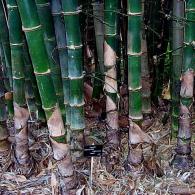Material Research Summary
Sam (Sustainability Lead) and I (Pedro Gomez-Palacios; Administrative Lead) were doing research on materials that could be used for the construction of our design. While researching, Sam and I looked into materials ranging from synthetic lumbers to magnets. The wide array of information gathered from our research allowed us to identify what materials could be most effective for our design as well as our prototypes.
While looking into materials to use for our prototype we had decided that magnets could hold a future in our design. So, Sam and I researched the properties of different magnets to find the most effective way to use them. Alnico (Aluminum, Nickel, and Cobalt) magnets were the strongest types of magnets until the development of rare earth metals. Alnico magnets are used to make permanent magnets, which inspired us to use these magnets to keep parts in place. We also found out that Neodymium magnets are the strongest type of permanent magnets that are commercially available. This allows Neodymium magnets to replace other types of magnets used in different appliances, thus making it capable to be used to connect multiple platforms together.
The following material we decided to research was wood. We looked into multiple types of woods, including Synthetic lumber and hardwoods. While researching the different types of woods, we identified that Tropical hardwood was the strongest because it was very dense. Furthermore, we also identified that if we used Composite boards or Synthetic lumber we would have a lower chance of getting mold, or decay. Thus inspiring us to use it as our main building material for the damp environment that is Nepal. While we had the wood in mind, we realized that we could use the material in the same manner as in decking. We researched multiple decking styles to manipulate the platforms weight, strength, and transportability, in order to further excel our design. Meanwhile we have been thinking of incorporating common materials locally found in Nepal, such as Bamboo, and different fabrics. Further research into Nepal's Flora and Fauna, lead to the identification that Bamboo was the most common material used in construction. This inspired us to research the different species of bamboo commonly located in Nepal as well as their uses.
We did not just look into woods, plastics, and magnets, we also looked into metallic materials because of their durability and weight. Sam and I researched Aluminum, as it is the lightest metallic material for use in our platform.
While keeping all these materials use in mind, we realized that we wanted to build a quick relief platform, not a long term idea. Our idea is to make a platform that will allow people to live on a flat surface above ground, away from rubble and other dangers. The main duration for the structures use would not exceed one year, therefore we would have to use materials that can be easily replaced and maintained. This thought process allowed us to rethink each materials real purpose, thus allowing us to incorporate it to our final prototype. In the end we chose to follow through on the use of bamboo, as it was a strong, durable, common, and flexible material that could be used in more than one manner.


